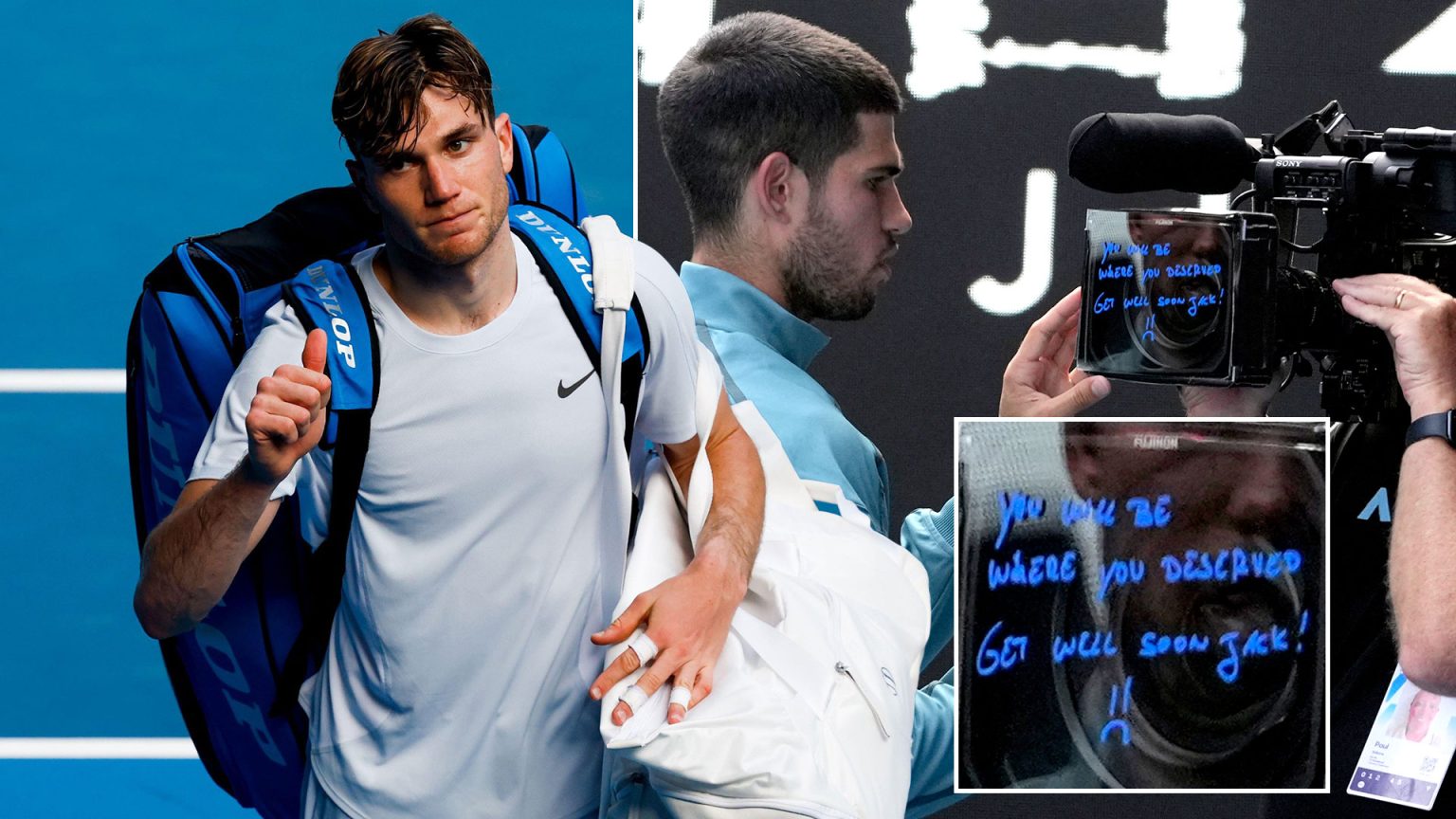Jack Draper’s Australian Open campaign came to an abrupt and unfortunate end during his second-round clash against third seed Carlos Alcaraz. The British No. 1 was forced to retire due to a recurring hip injury after losing the first two sets 7-5 and 6-1. The 23-year-old Draper received on-court treatment following the first set but was ultimately unable to continue after the second, acknowledging the toll the match had taken on his body. He left the Rod Laver Arena to a warm applause from the crowd, acknowledging their support with a gesture of apology for his premature exit. Draper’s vulnerability stemmed from a lack of competitive play and proper preparation leading up to the tournament.
The Spaniard Alcaraz expressed his disappointment at the circumstances surrounding the win, emphasizing his respect for Draper and his disappointment that the match ended this way. Alcaraz acknowledged Draper’s sportsmanship and the unfortunate timing of the injury, referencing their planned pre-season training together that was derailed. He expressed confidence in Draper’s ability to recover and return to form, echoing sentiments shared by many who have witnessed the young Brit’s talent. Alcaraz’s gracious response highlighted the mutual respect between the two players and underscored the unfortunate nature of injuries in professional sports.
Draper later confirmed the severity of his hip issue, revealing that he entered the tournament managing the pre-existing injury and was surprised to have progressed as far as the second round. He admitted to experiencing significant pain from the third game onwards, affecting multiple areas of his body. Despite attempting to manage the pain, the accumulated strain from the lack of preparation and the intensity of the match proved too much. He described his condition as a “ticking time bomb,” highlighting the risk he took competing with minimal preparation.
Draper’s limited preparation time – a mere ten days – proved insufficient to adequately condition his body for the demands of a Grand Slam tournament. He had been out of competitive action since the end of October and entered the Australian Open with significant concerns about his physical readiness. Despite his best efforts to manage the existing hip injury, the intensive nature of professional tennis exacerbated the problem, leading to his eventual withdrawal. The combination of the pre-existing injury and limited preparation time created a perfect storm for Draper, ultimately derailing his tournament hopes.
This early exit from the Australian Open represents a setback for Draper, who showed promise in his previous matches. The forced retirement underscores the fragility of a tennis player’s career and the constant battle against injuries. Draper’s experience serves as a stark reminder of the importance of adequate preparation and injury management in professional tennis. While disappointing, the experience will likely motivate Draper to focus on his recovery and return to the court stronger and better prepared for future tournaments.
Looking ahead, Draper will need to prioritize his rehabilitation and build a robust training regimen to ensure his long-term health and competitiveness. This setback, while challenging, presents an opportunity for Draper to reassess his training approach and develop strategies for injury prevention. His resilience and determination will undoubtedly play a crucial role in his recovery and his eventual return to the top tier of professional tennis. The experience gained from this unfortunate event could ultimately contribute to a more sustainable and successful career for the young British player.




